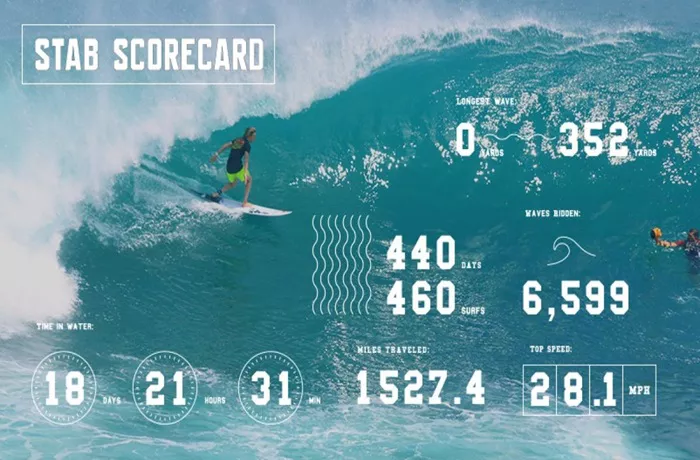Professional surfing combines athletic prowess with artistic expression, and its scoring system reflects this unique blend. Understanding how professional surfing is scored requires a detailed examination of the judging criteria, the role of judges, and the nuances that affect a surfer’s final score. This article provides a comprehensive overview of how surfing competitions are scored, highlighting the key elements that contribute to a surfer’s performance evaluation.
The Basics of Surfing Scoring
The scoring system in professional surfing is designed to evaluate the complexity and execution of maneuvers performed by surfers during their heats. It combines subjective judgments with objective criteria to provide a fair and comprehensive assessment of each performance.
Scoring System Overview
- Wave Selection: Surfers are judged based on the quality of the waves they choose. The ability to select the best waves that offer the most potential for high-scoring maneuvers is crucial.
- Maneuvers Performed: The technical difficulty, variety, and innovation of the maneuvers executed on the wave are key components in scoring. Judges look for a combination of powerful, stylish, and creative maneuvers.
- Overall Performance: Surfers are also evaluated on how well they integrate their maneuvers into a cohesive performance. This includes flow, speed, and control.
The Judging Criteria
Professional surfing competitions use a detailed set of criteria to assess surfers’ performances. Understanding these criteria helps in grasping how individual waves and overall heats are scored.
Criteria for Evaluating Individual Waves
- Degree of Difficulty: Judges assess the difficulty of each maneuver based on its technical complexity. Higher scores are awarded for maneuvers that require greater skill and precision.
- Execution and Style: The execution of each maneuver is judged on its precision, smoothness, and style. Surfers who perform their moves with elegance and control receive higher scores.
- Innovation and Variety: Creativity in maneuver selection and execution contributes to higher scores. Judges value surfers who bring new and inventive moves to their performances.
- Wave Power and Length: The power and length of the wave also play a role. Longer rides and waves with more power typically offer more opportunities for high-scoring maneuvers.
Heat Scoring and Overall Impression
- Highest and Lowest Scores: In each heat, surfers’ performances are judged, and the highest and lowest scores for each wave are discarded. The remaining scores are averaged to determine the surfer’s final score for that wave.
- Heat Total: The total score for a heat is the sum of the surfer’s best waves within the allotted time. Competitors are typically allowed to surf multiple waves, but only the top-scoring waves count towards their total score.
- Overall Impression: Beyond individual waves, judges also consider the overall impression of the performance, including the surfer’s ability to maintain high standards across their entire heat.
The Role of Judges in Professional Surfing
Judges play a critical role in the scoring process. Their expertise and experience are essential for providing accurate and fair assessments of each surfer’s performance.
Judge Panels and Scoring Process
- Judge Panels: Competitions generally feature a panel of judges who bring diverse perspectives and expertise. This diversity helps ensure a balanced evaluation of performances.
- Scoring Technology: Modern surfing competitions use advanced scoring technology to record and calculate scores. This technology helps maintain accuracy and consistency in the judging process.
- Judging Criteria Documentation: Detailed documentation of judging criteria is provided to judges to ensure they adhere to standardized evaluation practices. This documentation helps maintain fairness and transparency in the scoring process.
Factors Affecting Scores
Several factors can influence the scoring of a surfing performance. Understanding these factors provides insight into how scores are determined and how surfers can maximize their potential.
Surf Conditions and Wave Quality
- Wave Consistency: Consistent and high-quality waves offer more opportunities for high-scoring maneuvers. Surfers who capitalize on favorable conditions often achieve higher scores.
- Wave Size and Shape: Larger and well-shaped waves are generally more favorable for performing high-difficulty maneuvers. The quality of the wave can significantly impact scoring.
Surfer’s Technique and Strategy
- Adaptability: Surfers who can adapt their techniques to varying wave conditions demonstrate greater skill. Adaptability can positively influence scores, especially in challenging conditions.
- Strategic Wave Selection: Choosing the right waves to maximize scoring potential is crucial. Strategic wave selection allows surfers to perform their best maneuvers and achieve higher scores.
see also: When and Why Surfing Became an Olympic Sport?
Conclusion
The scoring system in professional surfing combines technical evaluation with artistic judgment to provide a comprehensive assessment of surfers’ performances. By understanding the criteria and factors that influence scoring, surfers can better prepare and strategize to excel in competitions. The balance between technical skill, creativity, and overall performance ensures that the most outstanding performances are recognized and rewarded.
FAQs:
How are scores calculated in professional surfing?
Scores in professional surfing are calculated based on the highest and lowest scores for each wave. The remaining scores are averaged to determine the final score for that wave. The total score for a heat is the sum of the surfer’s best waves within the allotted time.
What criteria do judges use to evaluate maneuvers?
Judges evaluate maneuvers based on their degree of difficulty, execution and style, innovation and variety, and the power and length of the wave. Each of these factors contributes to the overall score for a wave.
How does wave selection impact a surfer’s score?
Wave selection is crucial because it affects the opportunities available for high-scoring maneuvers. Surfers who choose waves with greater potential for performing technical and creative moves typically achieve higher scores.
What is the role of technology in surfing competitions?
Technology in surfing competitions is used to record and calculate scores accurately. Advanced scoring systems help maintain consistency and fairness in the judging process.
How do judges ensure fairness in the scoring process?
Judges ensure fairness by using standardized criteria and detailed documentation. Panels of judges provide diverse perspectives, and scoring technology helps maintain accuracy and consistency.
related topics:

